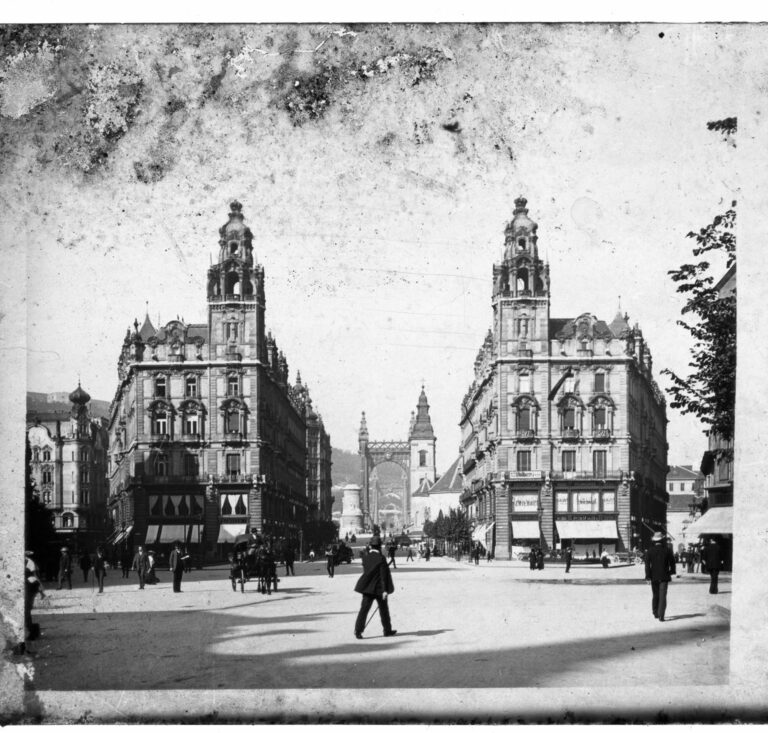
1901
1914
The splendor of the Belle Époque era
The turn of the 19th century marked the prosperity and economic boom of the Austro-Hungarian Monarchy and Budapest became a modern metropolis, boasting with the 1st underground railway in the continent; the stunning building of the Hungarian Parliament was built – which is the 3rd biggest Parliament of the world -, the banks of the Danube was built in, and the imposing Andrássy Avenue was constructed.
It was the time when Princess Maria Klotild, the Archduchess of Hungary, commissioned the famous architects Kálmán Giergl and Flóris Korb to build two mirroring palaces at the gateway of the Elisabeth bridge, to form the quintessence of community living in the inner center of Budapest.
The Palace gave home to the two-story café in 1901, which soon became one of the most well-known and beloved institutions of the legendary coffee house culture of Budapest, under the name of Belvárosi Kávéház. At the beginning of the 1900’s the coffee houses were the most popular scenes of social life, where the residents of the city could meet over a coffee, regardless of their social status or background.
The café was the second home for the emerging and talented poets and writers of the time, where they used to meet with philosophers and artists, and where they wrote some of the most important works of the Hungarian literature, sitting by their favourite tables all day, like ‘The Adventures of Sindbad’ by Gyula Krúdy, famous Hungarian writer.
Not only the bohemian crowd used the café as a place for socializing, but also journalists and doctors came by every day to read their favourite paper, undergraduates and politicians had heated debates and prominent public figures and the aristocrats frequented the cafés to see and be seen.
Even the ordinary, working class people had a chance to feel the illusion of the wealth and splendor of the Belle Epoque era, over an espresso or a simple meal.
This is how Dezső Kosztolányi, (1885 – 1936) famous Hungarian writer, journalist and translator documented the era/narrates those legendary times:
Dezső Kosztolányi: Budapest, the city of coffee (1914) – excerption
“All coffee houses should be marked with a commemorative plaque. After the Turkish bath the Hungarian coffee house is the first specialty of the East. We spend our lives here. We know it in every hour of the day, in every light, like others know their homes; 7:00 in the morning as well as 3:30 and 4:30 am, when they place the chairs on the tables. There is clerk-time (7:00 – 8:00 am), attorney-time (8:00 – 9:30 am), doctor-time (9:30 – 10:30 am), petty bourgeois-time (12:30 – 3:00 pm), family-time (4:00 – 7:00 pm), siesta-time (7:30 – 11:00 pm), roisterer-time (11:00 pm – 2:00 am), artist-time (2:00 -3:30 am) and business-time (always).”




